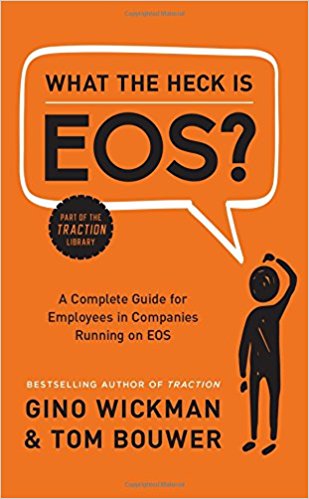This is part book review and part ‘here is how you could use it’. Value #4 of The trU Group is learning + doing = growth, so learning is always accompanied with support to move to action! If you are not a company that uses EOS, check-out the EOS Journey page to get some context on what it is.
I need to say up front that I was a little skeptical of this book because I felt the previous book from EOS Worldwide, How to Be a Great Boss, was more repackaging old content to sell a book. After I read this book, I was skeptical no longer. It is formatted to be an effective learning tool, and I feel that any EOS company could and should integrate it into the development of EOS throughout their organization. It also follows my core belief #1:
Great conversations start with a question.
At the end of each chapter, they have included questions that an employee should ask their leader. I guarantee these questions will drive some powerful conversations.
The book is written with a tone and language that speaks directly to people in your organization who are not on the leadership team. This is evident by looking at the table of contents; notice how it speaks directly to your people and drives their ownership in using EOS to help them work toward their own personal goals and the goals of the organization:
- Chapter 1: What the Heck Is EOS?
- Chapter 2: How Does EOS Work? (The EOS Model)
- Chapter 3: Do You See What They Are Saying? (The Vision/Traction Organizer)
- Chapter 4: Who’s Doing What? (The Accountability Chart)
- Chapter 5: What Is Most Important Right Now? (Rocks)
- Chapter 6: Why Do We Have to Have Meetings? (The Weekly Meeting Pulse)
- Chapter 7: What’s My Number? (Scorecard and Measurables)
- Chapter 8: How Am I Doing? (People Analyzer)
- Chapter 9: What Do I Do Next? (Conclusion)
- Appendix A: Your Role
- Appendix B: Questions to Ask Your Manager
Here are the core sections I flagged with post-it notes as I read the book:
- IDS, p. 104: Teaches the IDS methodology and provides an example of how a leader might facilitate an IDS topic with two teammates. The example falls into the category of simple but not easy, yet as an implementer many of you have probably seen me be this direct. I have witnessed truths like this shared and issues resolved.
- Chapter 7: What’s My Number (Scorecard & Measurables), p. 114: Metrics to help teams and individuals see progress or issues more clearly in their work are critical for growth-focused organizations. This is also the topic I see organizations struggle with the most. The title pulled me in, and the content will drive great conversations with your team.
- Chapter 8: How Am I Doing? (People Analyzer), p. 129: This chapter is something that will scare leaders because a portion of your team will ask for feedback, and if you don’t do quarterly conversations around performance then get ready. The part I love about this chapter is that it teaches the People Analyzer method and encourages them to schedule a conversation with their leader.
- Great questions for self-evaluation and preparation for quarterly conversation, p. 139-140: Let me say it again, great conversations start with a question. The two questions presented that should guide the quarterly performance conversation are: “What’s working?” and “What’s not working?” This might be my favorite part of the book, and I am looking forward to your stories about the conversations that result from these questions.
There is lots of value in this book if you use it effectively. For some tips on how to do this, send me a note and I will email you a template. I highly recommend this as an addition to your library. Here is a link to the book.
For my EOS partners, remember that I pledge 2-4 hours between quarterlies to more actively support your effective use of EOS. If it would help, I would be glad to help you construct and maybe even facilitate a portion of the roll-out of this book to your team. Just call me if you want to explore that option.
